
“I’d like to visit the swamp.”
My parents thought this an odd request when I visited my home state of Minnesota last week, but I’d recently learned that I’d grown up literally next door to one of the most unique plant communities in the world, and I had never appreciated it.
So I set out to rediscover the peat bogs of my youth.
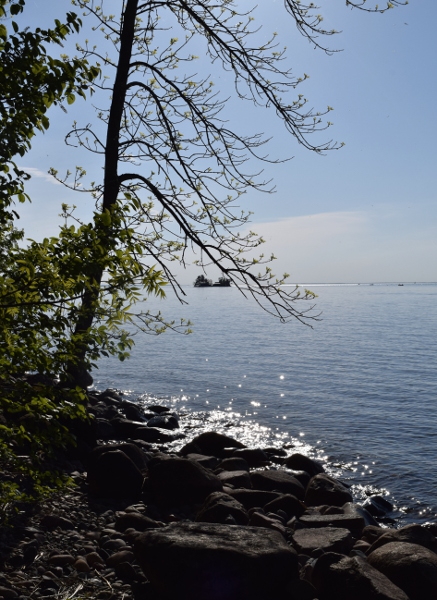
I grew up 100 miles north of the Twin Cities in the town of Isle, population 751, which sits on the shores of Mille Lacs Lake. Mille Lacs is the second largest lake (after Red Lake) in this land of 10,000. It’s about 70 miles in circumference.
Mille Lacs Lake was formed by glaciers that scraped the earth during the last Ice Age some 15,000 years ago. Creationists here maintain that the lake was made by Paul Bunyan.

Among the sediment left behind by the retreating glaciers were agates, which I collected from gravel roads as a kid. Someday I’ll do something crafty with them and put them on display. But I digress.
Oak trees were finally leafing out, and the forest floor was dotted with ferns, trilliums, jack-in-the-pulpits, columbine, wild geraniums, bellwort (Uvularia grandiflora), starflower (Lysimachia borealis), and early meadow rue (Thalictrum dioicum).
The woods at Father Hennepin State Park in Isle looked much like any other in the Eastern U.S.

Adjacent to this typical woodsy scene, however, was an alien landscape. This is a peat bog.
Once an extension of the ancient Mille Lacs lake bed, this area over time has become occupied by sedges and mosses and a few specially adapted plants that sprout on the organic matter that accumulates there.
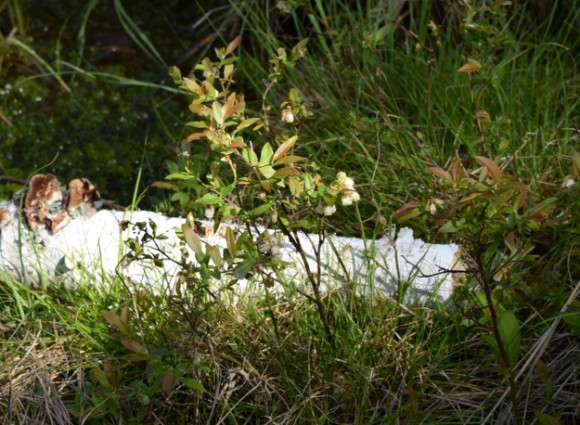
A peat bog is a harsh place in which few plants can survive. It’s waterlogged, anaerobic, nutritionally poor, usually highly acidic, and cold—temperatures can drop to -30 or -40°F here in winter.
Lowbush blueberries (Vaccinium angustifolium), shown here, thrive in this environment and were flowering when I visited. Cranberries were growing there, too.
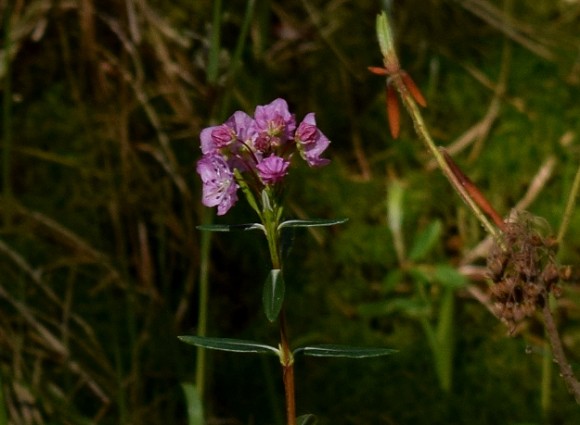
Bog laurel (Kalmia polifolia), with buds like pink frosting stars on a cake, was beginning to bloom.
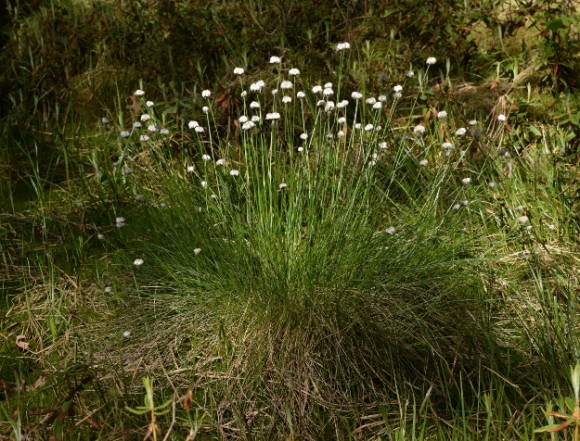
Cotton grass (Eriophorum angustifolium), a type of sedge, added a pop of white with its feathery white seedheads.
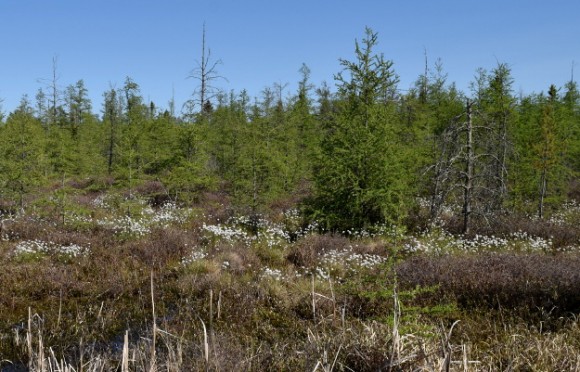
En masse, the cotton grasses shone from a distance.
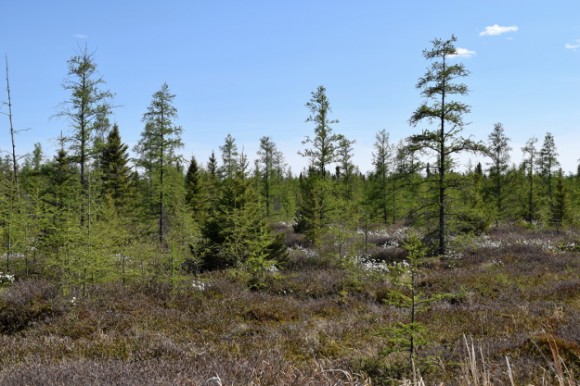
The two dominant trees you’ll find in a peat bog are black spruce (Picea mariana) and American larch (Larix laricina), the latter better known as “tamarack.” They’re stunted in this tough environment and most of them are probably much older than they look.

In his book, Native Trees, Shrubs, and Vines, Will Cullina describes young larch foliage as “peppermint green,” which this tamarack’s certainly was when I saw it.
Tamaracks turn gold in fall and drop their needles. My mom still laughs when a friend of hers tells the story of the time she flagged a nice “evergreen” on her property in fall to cut as a Christmas tree. When she went back in winter, it was bare!

At ground level, a shrub called leatherleaf (Chamaedaphne calyculata) was plentiful, as was labrador tea (formerly Ledum groenlandicum, now Rhododendron groenlandicum), which is pictured here.
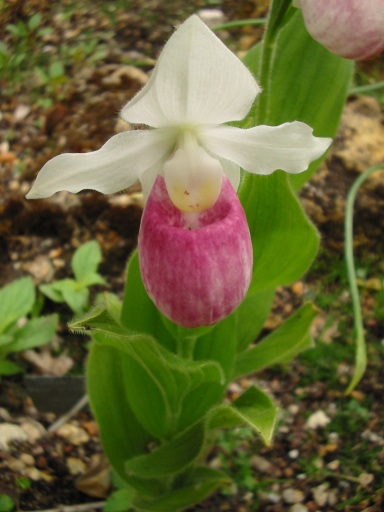
Peat bogs are also home to orchids like the Minnesota state flower, the showy lady slipper (Cypripedium reginae), and carnivorous plants like the purple pitcher plant (Sarracenia purpurea) and spoonleaf sundew (Drosera intermedia).
Alas, it was too early in the year to see orchids or carnivores in the bog.
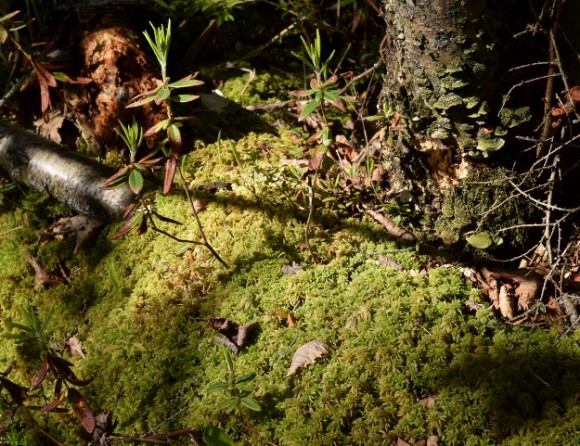
Sphagnum moss and other mosses knit the whole plant community together.
The peat bog has a weird spongy quality to it when you step onto it. This is because over hundreds or thousands of years, the mosses and other plant matter partially decompose, forming a thick layer of “peat,” which floats on the ancient lake bed. This layer of organic matter acts as soil to support other forms of plant life.
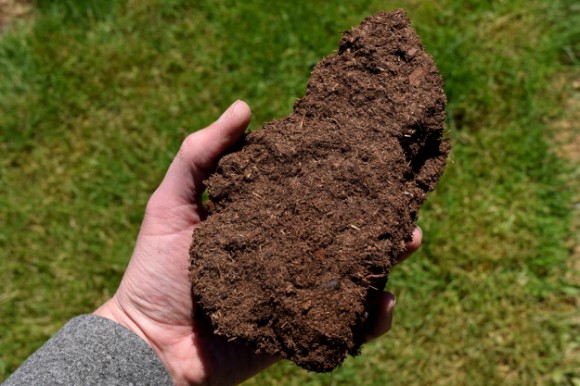
Peat moss is harvested (mostly from bogs in Canada) for use in horticulture. Although it’s difficult to re-wet after it has dried, peat has excellent water-holding capacities once it’s saturated and many growers use it in potting mixes and seed-starting mixes.
Peat also has anti-bacterial properties, and native Americans used it to treat wounds.

Peat bogs are hard to examine up close, because there’s usually a swampy transitional area surrounding them. This area is populated by alders, cattails, and marsh marigold (Caltha palustris).

as well as the bog birch (Betula pumila),
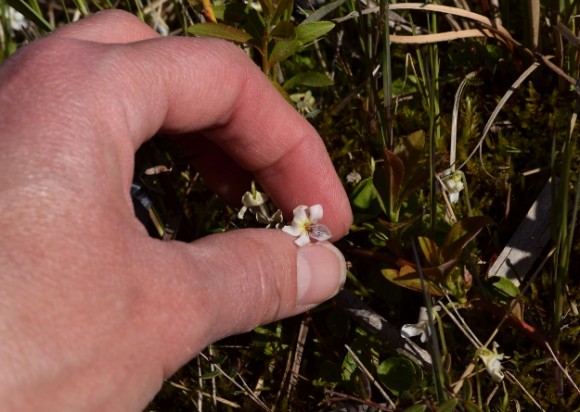
and the cute little bog white violet (Viola lanceolata).

A bog boardwalk at nearby Kathio State Park in Onamia, Minnesota, allowed me to study the bog without getting my feet wet.

It was wonderful to get inside it and see the bog from within.
The mosquitoes were terrible, but not as horrific as they are in high summer, and the deer flies weren’t out yet.
In the distance, a ruffed grouse “drummed” his mating call, which sounds like a sputtering engine being started. I’d heard that sound many times in my youth, but didn’t learn what it was until much later.
Chickadees were chattering in the bog, and this blackburnian warbler came in for a landing to check out what I was doing on his turf.
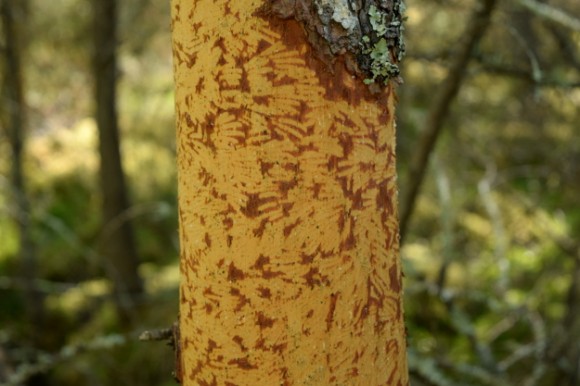
A deer(?) had made a meal out of this tamarack’s bark during the harsh Minnesota winter.
Black bears are frequently spotted here, and timber wolves have made a comeback in the Mille Lacs area in recent years.
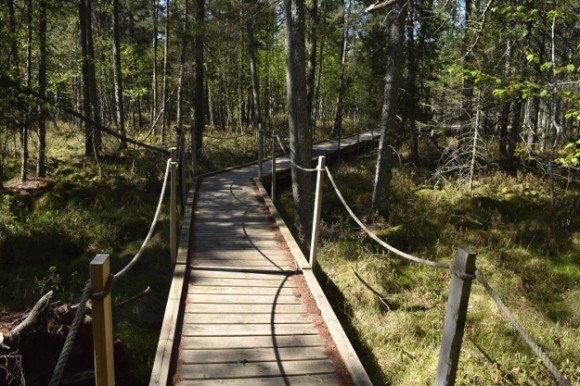
I left the bog with a new understanding of a place I thought I had known so well. How often is it the case that we fail to appreciate the wonders in our own backyard? I’m glad I got to see with new eyes the place I called home for so many years.
Before leaving, though, I had one more request. Bald eagles have also made a comeback near my hometown, and I wanted to see one. So my parents drove me to a place by the lake where they often spot them.

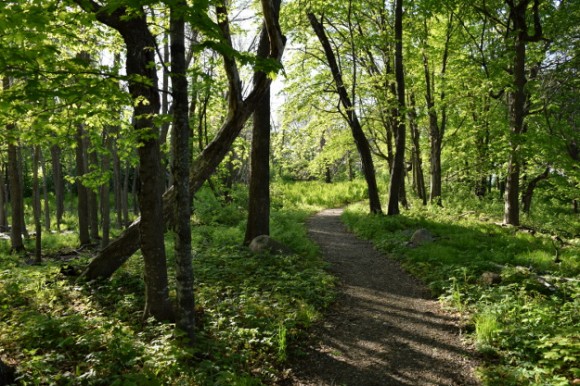
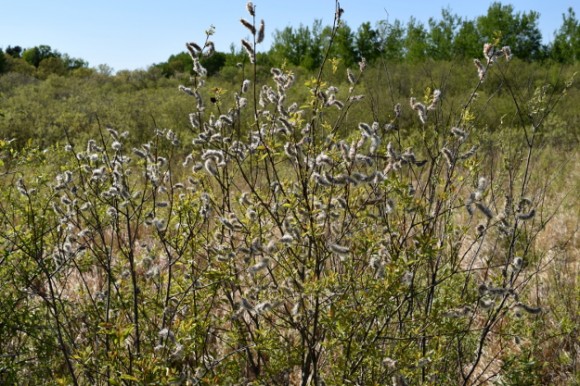


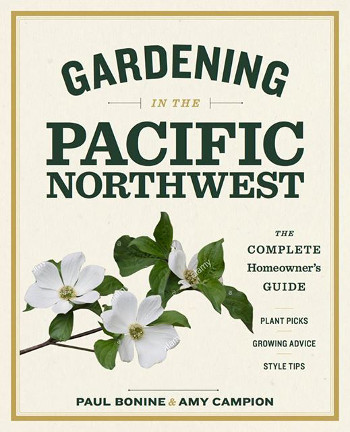
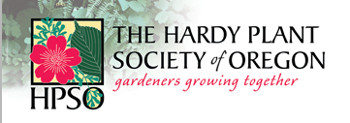






















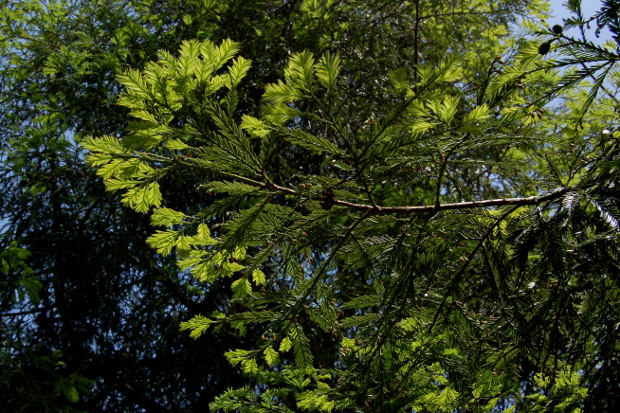


[…] few camellias. In colder zones, there’s nothing blooming at all. It was -16°F last Monday in my hometown in Minnesota. The record for that day is […]